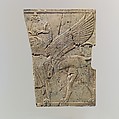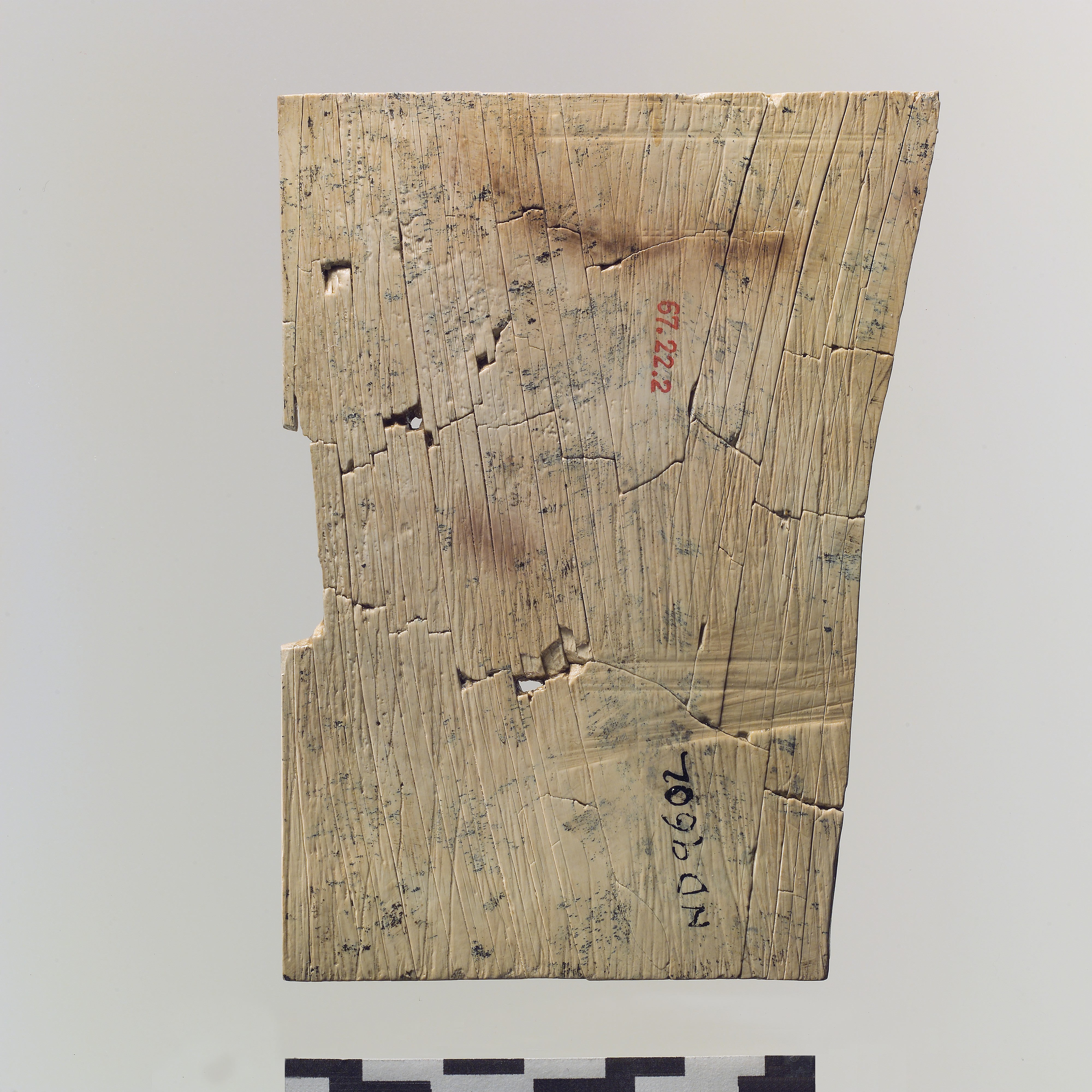Furniture plaque carved in relief with a winged, falcon-headed sphinx
Not on view
This exquisitely carved plaque was found in a large storeroom at Fort Shalmaneser, a royal building at Nimrud that was probably used to store tribute and booty collected by the Assyrians while on military campaign. Bound on the upper and lower edges by a border of parallel lines, a striding sphinx that combines a lion’s body with what is probably the head of a falcon is carved in very low relief. The inclusion of several Egyptian elements including the nemes cloth (a royal, pleated headdress), a patterned apron with a pleated tassel, and the atef crown, an embellished version of the crown of Upper Egypt with an ostrich plume on each side, horizontal ram’s horns underneath, and the unusual addition of rising uraei (mythical, fire-spitting serpents), suggest that this piece can be attributed to the Phoenician style. The skillful carving technique is evident in the sphinx’s slender, leonine body and gently curving wings that comprise elegantly articulated feathers. Stylized musculature on the back of the sphinx meet several lines that fall along the hindquarters that may represent tassels. An adhesive probably aided the attachment of the ivory to a wooden furniture frame. The reverse has been roughened, probably to help the glue join the surface of the plaque to the frame.
Built by the Assyrian king Ashurnasirpal II, the palaces and storerooms of Nimrud housed thousands of pieces of carved ivory. Most of the ivories served as furniture inlays or small precious objects such as boxes. While some of them were carved in the same style as the large Assyrian reliefs lining the walls of the Northwest Palace, the majority of the ivories display images and styles related to the arts of North Syria and the Phoenician city-states. Phoenician style ivories are distinguished by their use of imagery related to Egyptian art, such as sphinxes and figures wearing pharaonic crowns, and the use of elaborate carving techniques such as openwork and colored glass inlay. North Syrian style ivories tend to depict stockier figures in more dynamic compositions, carved as solid plaques with fewer added decorative elements. However, some pieces do not fit easily into any of these three styles. Most of the ivories were probably collected by the Assyrian kings as tribute from vassal states, and as booty from conquered enemies, while some may have been manufactured in workshops at Nimrud. The ivory tusks that provided the raw material for these objects were almost certainly from African elephants, imported from lands south of Egypt, although elephants did inhabit several river valleys in Syria until they were hunted to extinction by the end of the eighth century B.C.
Due to rights restrictions, this image cannot be enlarged, viewed at full screen, or downloaded.
This artwork is meant to be viewed from right to left. Scroll left to view more.



